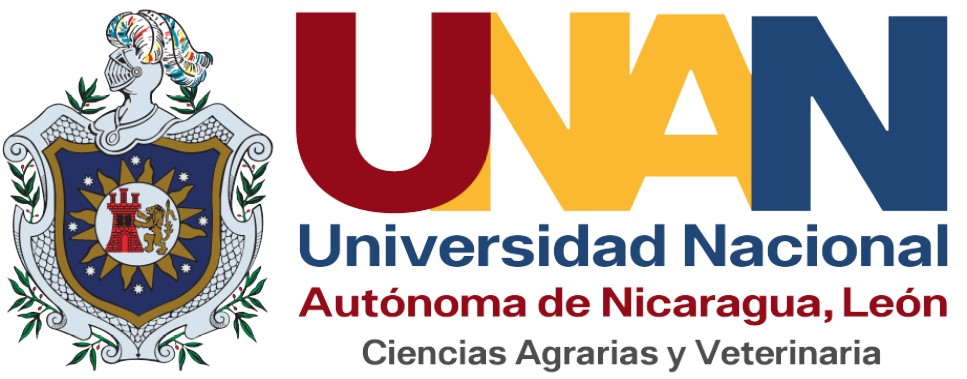Elaboration of paper with six varieties of pennisetum purpureum schumach in Veracruz, Mexico
DOI:
https://doi.org/10.5377/ribcc.v7i14.12608Keywords:
Fiber, Bagasse, Whitening, FAS, PulpAbstract
At present, the environmental impact of fossil fuels has generated the search for alternative sources of energy such as biomass from sugar cane and fodder pastures. In order to generate alternatives for the production of fiber and cellulose similar to that obtained with sugarcane bagasse, six varieties of Pennisetum purpureum Schumach were evaluated at the laboratory level (OM-22, Cameroon, Maralfalfa, CT-115, Roxo and Urockowona) at 120, 150 and 200 days after sowing (das). The varieties were sown in tip and tail in double cordon in strips of 5 furrows of 1.2 meters between rows and 20 meters in length. The soil was of a vertisol soil type with a pH of 5.4, clayey texture and 2.6% OM. It was found that OM-22, Cameroon, Maralfalfa, Roxo and Urockowona presented good potential for the production of fiber and cellulose at 150 das, discarding the variety CT-115. The Urockowona variety, presented the highest content of Suitable and Dry Fiber (SDF) in the three cut-off dates, excelling at 150 das with 34.4%; while the rest did not exceed 25% in the three evaluated dates. The total biomass yield was similar in the six varieties evaluated in their first cut, exceeding 80 t ha-1 in green from 150 das. It is concluded that the Urockowona, Camerun and Maralfalfa varieties are the ones with the greatest potential for the production of fiber and cellulose to make paper.
Downloads
Metrics
References
Andrade, M. F., y Colodette, J. (2016). Production of printing and writing paper grade pulp from elephant grass. Cerne, 22, 325-336.
Basso, V., Machado, J. C, da Silva Lédo, F.J. da Costa Carneiro, J., Fontana, R. C, Dillon, A.J y Camassola, M. (2014). Diferentes accesiones de pasto elefante (Pennisetum purpureum) como sustratos para la producción de enzimas para la hidrólisis de materiales lignocelulósicos. Biomasa y bioenergía, 71, 155-161.
Beltrán L. S., Hernández G.A., García M.E., Pérez P. J., Kohashi S.J., Herrera H. J.G., y Quero C. A. R. (2005). Efecto de la altura y frecuencia de corte en el crecimiento y rendimiento del pasto Buffel (Cenchrus ciliaris L.) en un invernadero. Agrociencia 2005. 39(2):137-147.
Botero-Londoño, J. M, Celis-Celis, E. M., y Botero-Londoño, M. A. (2021). Calidad nutricional, absorción de nutrientes y producción de biomasa de Pennisetum purpureum cv. Hierva rey. Informes científicos, 11 (1), 1-8.
Calzada-Marín, J. M., Enríquez-Quiroz, J. F., Hernández-Garay, A., Ortega-Jiménez, E., y Mendoza-Pedroza, S. I. (2014). Análisis de crecimiento del pasto maralfalfa (Pennisetum sp.) en clima cálido subhúmedo. Revista mexicana de ciencias pecuarias, 5(2), 247-260.
Cámara del Papel. (2013). Recuperado de http://www.camaradelpapel.mx/trabajos-dela-seccion-tecnica/
Capellán, P. I., Mediavilla M., Castro C., Carpintero O. y Miguel L. J. (2014). Agotamiento de los combustibles fósiles y escenarios socioeconómicos: Un enfoque integrado. Recuperado de http://www.eis.uva.es/ energiasostenible/wp-content/uploads/2014/09/Capellanetall2014 /09/Capellanetall2014_esp.pdf
Daud, Z., Mohd Hatta, M. Z., Mohd Kassim, A. S., Aripin, A. M., & Awang, H. (2014). Analysis of Napier grass (Pennisetum purpureum) as a potential alternative fibre in paper industry. Materials Research Innovations, 18(sup6), S6-18.
Demafelis, R., Movillon, J., Predo, C., Maligalig, D., Eleazar, P. J., y Tongko-Magadia, B. (2020). Socio-economic and Environmental Impacts of Bioethanol Production from Sugarcane (Saccharum officinarum) and Molasses in the Philippines. Journal of Environmental Science and Management, 23(1).
Egwu, U. (2021). Mejora del potencial biometano del pasto elefante (pasto Napier, Pennisetum purpureum Schum) mediante la adición de cenizas de biomasa y extractos de cenizas como suplementos. Informes de tecnología de fuentes biológicas, 15, 100760.
Fahmi, M., Utomo, R., Suhartanto, B., Astuti, A. y Umami, N. (2021). Calidad química y valor de digestibilidad en ensilaje de Pennisetum purpuphoides y Pennisetum purpureum Gamma con diferentes niveles de suplementación con melaza. En Key Engineering Materials (Vol. 884, págs. 204-211). Trans Tech Publications Ltd.
Falasca, S., Flores M. N. y Galvani G. (2011). ¿Puede usarse una especie invasora como Arundo donax (caña común) con fines energéticos en Argentina? Recuperado de http://ebookbrowsee.net/file-name-inta-arundo-donax-con-finesenergeticos- en-argentina-pdf-d314127398
FAO. (2011). Pulp and paper capacities survey 2010-2015. Food and Agriculture Organization of the United Nations, Roma Italia.
Fontoura, C. F., Brandão L. E. y Gomes L. L. (2015). Elephant grass biorefineries: towards a cleaner Brazilian energy matrix? Journal of Cleaner Production, 96, 85-93.
García, E. (1987). Modificaciones al sistema de clasificación climática de Köppen (para adaptarlo a las condiciones de la república mexicana). 4ªed. Universidad Nacional Autónoma de México. México, D. F.
Grillo, C. C., y Saron, C. (2020). Madera-plástico de fibras Pennisetum Purpureum y polietileno reciclado de baja densidad. Revista de fibras naturales, 1-14.
Huang, P.F., Mou Q., Yang, Y., Li J. M., Xu M. L., Huang, J., y Yin, Y.L. (2021). Effects of supplementing sow diets during late gestation with Pennisetum purpureum on antioxidant indices, immune parameters and faecal microbiota. Vet Med Sci. 2021;7:1347– 1358. https://doi.org/10.1002/vms3.450
Kumar, A., Tiwari, V., Singh, P., Bishi, S. K., Gupta, C. K., & Mishra, G. P. (2020). Advances and Challenges in Sugarcane Biofuel Development. In Biotechnology for Biofuels: A Sustainable Green Energy Solution (pp. 267-288). Springer, Singapore.
Lim, H. P. (2020). Properties Characterization of Napier Grass (Pennisetum Purpureum) as the Cost Effective Non-wood Subtitution for Natural Fibre Papermaking. Journal of Advanced Mechanical Engineering Applications, 1(1), 27-35.
Madera, N. B., Ortiz, B., Bacab, H. M., & Magaña, H. (2013). Influencia de la edad de corte del pasto morado (Pennisetum purpureum) en la producción y digestibilidad in vitro de la materia seca. Avances en investigación Agropecuaria, 17(2), 41-52.
Monção, FP, Rocha Júnior, VR, Silva, JT, De Jesus, NG, Marques, OFC, Rigueira, JPS y& Leal, DB. (2020). Valor nutricional del ensilaje BRS de pasto Capiaçu (Pennisetum purpureum) asociado con nopal. Revista iraní de ciencia animal aplicada, 10 (1), 25-29.
Osorio Saraz, Jairo Alexander, Fredy Varon Aristizabal, and Jhonny Alexander Herrera Mejia. "Mechanical behavior of the concrete reinforced with sugar cane bagasse fibers." Dyna 74.153 (2007): 69-79.
Paretas JJ. (1990). Ecosistemas y regionalización de los pastos en Cuba. Instituto de Investigaciones de Pastos y Forrajes. MlNAGRI. 1990:178.
Prinsen, P., Gutiérrez, A., & del Río, J. C. (2012). Lipophilic extractives from the cortex and pith of elephant grass (Pennisetum purpureum Schumach.) stems. Journal of agricultural and food chemistry, 60(25), 6408-6417. https://doi.org/10.1021/jf301753w.
Ra K., Shiotsu F., Abe J. y Morita S. (2012). Biomass yield and nitrogen use efficiency of cellulosic energy crops for ethanol production. Biomass and Bioenergy, 37. Pp. 330-334. https://doi.org/10.1016/j.biombioe.2011.12.047
Rainey, T. J. y Covey G. (2016). Pulp and paper production from sugarcane bagasse". In O'Hara, Ian M. & Mundree, Sagadevan (Eds.) Sugarcane- based Biofuels and Bioproducts. John Wiley & Sons, Hoboken, New Jersey, 259-280. https://doi.org/10.1002/9781118719862.ch10
Ramírez, R. C., Villalobos, E. V. V., & Rojas, J. C. V. (2021). Productividad del pasto Cuba OM-22 (Pennisetum purpureum x Pennisetum glaucum) con distintas dosis de fertilización nitrogenada. InterSedes, 22(45), 136-161.
Ribeiro, L. S. O., Pires, A. J. V., de Carvalho, G. G. P., Pereira, M. L. A., dos Santos, A. B. y Rocha, L. C. (2014). Fermentation characteristics, chemical composition and fractionation of carbohydrates and crude protein of silage of elephant grass wilted or with addition of castor bean meal. Ciências Agrárias, 35(3), 1447 -1462. https://doi.org/10.5433/1679-0359.2014v35n3p1447
Soto, M., L. Gama y M. Gómez. (2001). Los climas cálidos subhúmedos del estado de Veracruz, México. Foresta Veracruzana 3:31-40.
Tamminen, T., Mikkelson, A., Siika-Aho, M., Kruus, K., Pere, J., Gomes, F. J. B., & Colodette, J. L. (2018). Deposition of xylan isolated from Pennisetum purpureum on fibres of Eucalyptus globulus and characterisation of the composition of the surface xylans by immunolabelling and enzymatic peeling. Holzforschung, 72(11), 915-922. https://doi.org/10.1515/hf-2018-0002
TAPPI Useful Method 3. (2010). Determination os useful fiber in bagasse.
Triana, O., Leonard, M. F. Saavedra, N. Fernández, G. Gálvez y E. Peña. (2011). Atlas del bagazo de caña de azúcar. Monografía Ed. GEPLACEA, PNUD, ICIDCA, La Habana Cuba. 143 p. Ukanwoko, A. I. e Igwe, N. C. 2012. Proximate composition of some grass
Ukanwoko, A. I. e Igwe, N. C. (2012). Proximate composition of some grass and legume silages prepared in a humid tropical environment. International Research Journal of Agricultural Science and Soil Science. 2 (2), 68-71.
Umami, N., Ananta, D., Bachruddin, Z., Suhartanto, B. y Hanim, C. (2020). Contenido de nutrientes, fracción de fibra y producción de etanol de tres cultivares (Pennisetum purpureum Scumach.). En E3S Web of Conferences (Vol. 200, p. https://doi.org/10.1051/e3sconf/202020003008
Viana Otero, María Virginia, y Siri Prieto, Guillermo. (2018). Producción de biomasa de cultivos lignocelulósicos según el número de cortes. Agrociencia (Uruguay), 22(2), 13-23. https://dx.doi.org/10.31285/agro.22.2.4
Vieira, SMDM, Knop, MDC, Mesquita, PDL, Baston, EP, Naves, FL, Oliveira, LFCD y França, AB. (2020). Propiedades fisicoquímicas de un combustible sólido a partir de biomasa de carbón vegetal de pasto elefante (Pennisetum Purpureum Schum.) Y mascotas reciclables y HDPE. Investigación de materiales, 23.
Wei-Kit, D. C., Lim, S., Yean-Ling, P., y Kam-Huei, W. (2017). Application of Organosolv Pretreatment on Pennisetum Purpureum for Lignin Removal and Cellulose Recovery. In Proceedings of the 2017 4th International Conference on Biomedical and Bioinformatics Engineering (pp. 84-90). https://doi.org/10.1145/3168776.3168781
Zevallos Palomino, A. J. (2019). Estudio biométrico de fibras en tres especies de bambú–Estación Experimental UNCP Satipo–Junín.
Alves, A. F.; Zervoudakis, J. T.; Hatamoto-Zervoudakis, L. K.; Cabral, L. da S.; Leonel, F. de P.; Paula, N. F. de. , (2010). Replacing soybean meal with high energy cottonseed meal in diets for dairy yielding cows: intake, nutrient digestibility, nitrogen efficiency and milk yield. Rev. Bras. Zootec., 39 (3): 532-540
Downloads
Published
How to Cite
License
Copyright (c) 2021 Ibero-american JournalL of Bioeconomy and Climate Change e-ISSN 2410-7980

This work is licensed under a Creative Commons Attribution-NonCommercial-ShareAlike 4.0 International License.
Copyright © 2025 Rev. iberoam. bioecon. climate change. National Autonomous University of Nicaragua León (UNAN-León), Knowledge Area of Agrarian and Veterinary Sciences / Specific Area of Agroecology and Agribusiness / Center for Research in Agrarian Sciencies. Academic Directorate. Research Department. Publication and scientific events Unit.












 EDITORIAL
EDITORIAL e-ISSN
e-ISSN


 COPYRIGHT
COPYRIGHT This work is licensed under a Licencia Internacional
This work is licensed under a Licencia Internacional 












